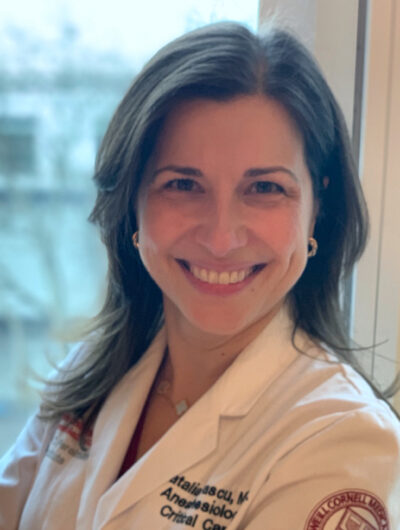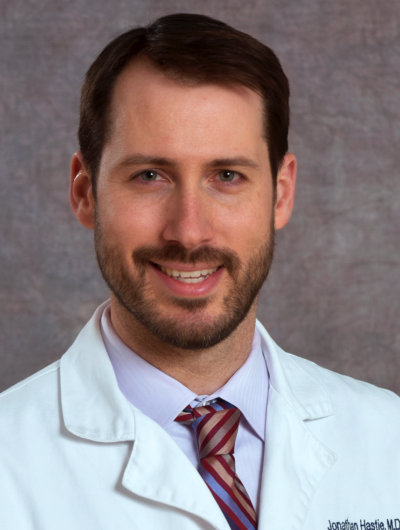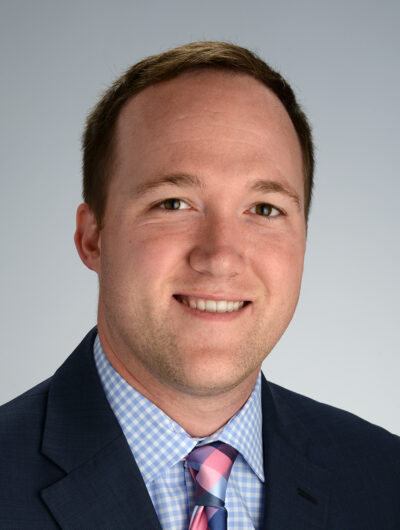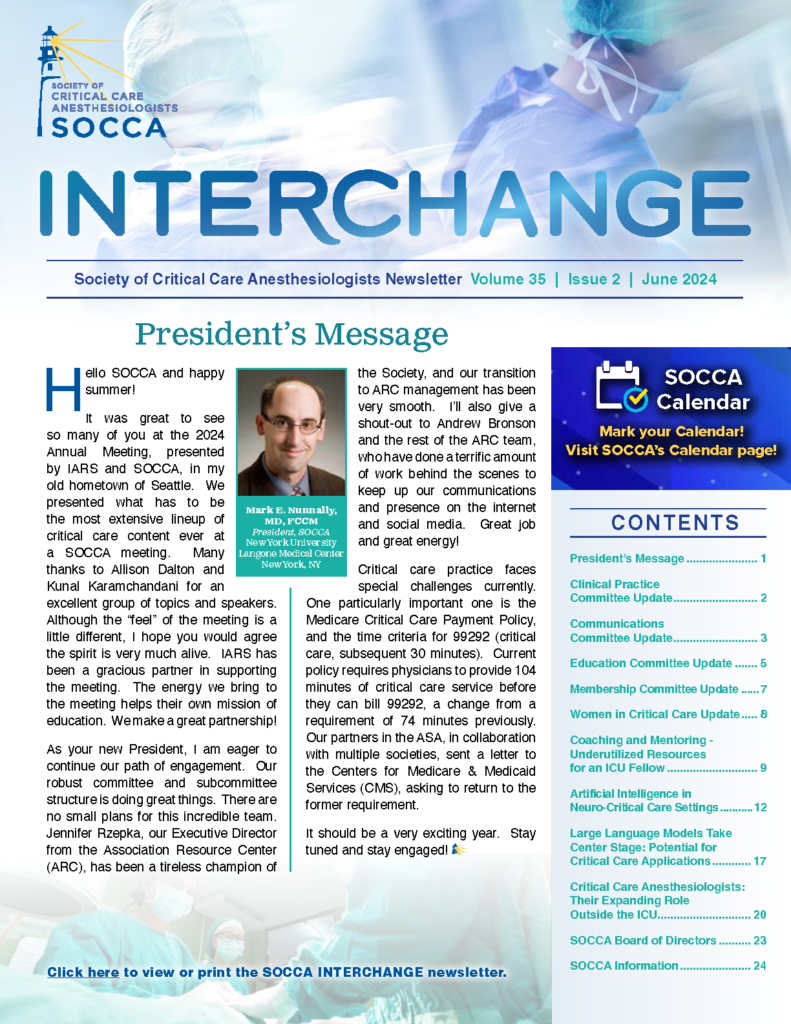The New York City Experience

Natalia Ivascu, MD

Jonathan Hastie, MD
Natalia Ivascu, MD (Weill Cornell Medicine) and Jonathan Hastie, MD (Columbia University Vagelos College of Physicians and Surgeons) are critical care and adult cardiothoracic anesthesiologists in New York City.
Their leadership of a coordinated COVID-19 pandemic response across the New York-Presbyterian health care system was recently featured in NEJM Catalyst: https://catalyst.nejm.org/doi/full/10.1056/CAT.20.0158.
Brent Kidd: How early in the crisis did your groups begin preparing for an influx of patients? What were those early days in March like?
Natalia Ivascu: I wish we would have been planning earlier. I was actually in Raleigh for oral boards in early March when news began to reach us about institutional travel bans and worsening COVID patient volumes. A lot of discussions began to happen very quickly regarding how we would handle the influx of patients and expand our ICU capabilities leading up to March 16, which is when the mayor issued an executive order suspending elective surgical procedures.
Jonathan Hastie: There was an element of fear that was real to everyone involved early on. It was real for us as leaders of our respective groups, and it was real for those at the bedside taking care of these very sick patients. We would open up a brand new unit, and it would be completely full of patients in a single day who would all be intubated. We had several colleagues become sick, some of which required intubation themselves. It is a powerful moment when you take care of someone you work with.
Natalia Ivascu: This interview may turn into a therapy session for Jonathan and myself as we reminisce about these events. I remember taking calls from the transfer center and getting call after call in a single day, often with young patients in their 30’s or 40’s who were extremely ill. There was a mental exhaustion component obviously, in addition to the emotions, as you came to realize your own vulnerability.
Brent Kidd: How did you go about staffing those newly created ICUs? Did you face difficulty engaging providers who may not normally practice in a critical care setting?
Jonathan Hastie: We had a lot of great coordination across specialties and divisions that may not normally work together. For staffing, we utilized an “ICU Pyramid” model where an intensivist was elevated to a consultant role supervising two or more units, and a critical care capable attending filled the traditional role of “ICU Lead” for each individual unit. We operated under the mindset that people who volunteered for a position are generally going to be more engaged and do a better job than those simply assigned. Thankfully, there were a lot of volunteers across specialties, and that decreased our need to go out and find people to staff these units.
Natalia Ivascu: With the cancellation of elective procedures we had a large workforce ready and available to help. We created specific teams to help our system as a whole face the pandemic. A few examples of those include a simulation team focused on PPE donning/doffing, airway teams, line teams, and proning teams. We even formed a family liaison team, which included providers who may not be able to be on the front lines of patient care but could help relay information regarding patient care plans and answer questions for loved ones. These accessory teams helped augment the traditional ICU team and allowed them to focus on the patient care as much as possible. When you have a lot of uncertainty, like we all did early in the pandemic, giving people a well-defined job in which they feel confident allowed us to utilize our available human resources effectively.
Brent Kidd: Nontraditional spaces for ICU overflow, such as operating rooms, were either implemented or planned across the country. What was your experience providing critical care services to patients in these spaces?
Jonathan Hastie: It was a surreal experience to go past an operating room that you know and have worked in for years, and yet now see that it contains three to four ICU patients on anesthesia machines. With the space limitations, drug shortages, and dialysis machine shortage, there was a sense of moral distress in that we were not providing ICU care as we usually did. But I used to tell other staff that lives are saved on the margin, and these patients who would have had nowhere else to go were alive and being cared for. The traditional ICUs obviously did great work throughout the crisis, but it was the nontraditional spaces that really made the difference in how we addressed the sheer volume of patients that needed care at that time.
Natalia Ivascu: First of all, I want to mention how incredibly proud I am about the work that everyone did taking care of these patients. I am grateful that so many people from different departments and divisions worked together in areas they may not have been comfortable in to help these patients. I remember when we first opened the OR-ICUs, which were being staffed by a lot of perioperative nurses and physicians, people were initially unsure about their ability to care for these patients. You came to realize, though, that we were all they had. It became important to find some forgiveness for yourself and for others, because everyone there was giving everything they had at all times just to keep up with the number of patients. Every bit of care we were able to provide in those spaces was more than the patients would have otherwise had access to.
Brent Kidd: What unique skills do you think critical care trained anesthesiologists bring to the fight against COVID-19, and what do you think their role will be in the era of healthcare to come?
Jonathan Hastie: I think you can define anesthesiologists as systems thinkers. We are routinely focused on the management of patient flow, efficiency, and resource utilization in the operating room, and I think those skills translated well to the needs of a pandemic. I can think of several real world examples of that in the triage skills needed to handle the volume of patients we were dealing with, in the interplay between critical care anesthesiology/medicine/surgery when managing these novel ICUs, or more practically in the management of critically ill patients on an anesthesia machine.
Natalia Ivascu: Anesthesiology training teaches flexibility, teamwork, and adaptability. We bring all of those skills to our critical care practice, and they were extremely important during the surge and in unusual environments, like the OR-ICU. Going forward, it is clear that we need to maintain preparedness for circumstances like we experienced. I believe anesthesiologist-intensivists are key to maintaining institutional flexibility to rapidly increase critical care physician coverage. Unlike our other critical care colleagues, anesthesiologists do not need to maintain outpatient practices and have an abundance of other clinical opportunities outside of their ICU duties. I believe expanding the volume of anesthesiologist-intensivists will likely prove to be a key mechanism, and an economical strategy, for hospitals to maintain a robust and available pool of intensivists for pandemic or other high-volume clinical surge situations.




































